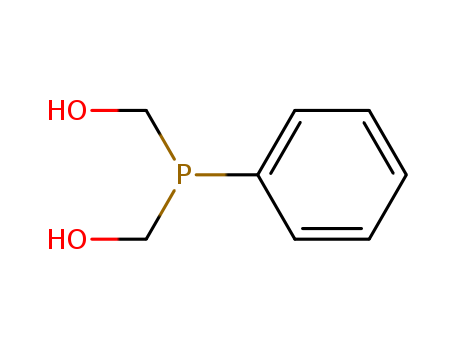- Chemical Name:Bis(hydroxymethyl)phenylphosphine
- CAS No.:3127-08-0
- Molecular Formula:C8H11 O2 P
- Molecular Weight:170.148
- Hs Code.:2906299090
- DSSTox Substance ID:DTXSID30185192
- Nikkaji Number:J1.153.632H
- Wikidata:Q83056191
- Mol file:3127-08-0.mol
Synonyms:Bis(hydroxymethyl)phenylphosphine;3127-08-0;(Phenylphosphinidene)dimethanol;(Phenylphosphinidene)bismethanol;[hydroxymethyl(phenyl)phosphanyl]methanol;BRN 0908085;Methanol, (phenylphosphinidene)bis-;Methanol, (phenylphosphinidene)di-;Methanol, (phenylphosphinidene)bis- (9CI);(phenylphosphinediyl)dimethanol;SCHEMBL1465059;DTXSID30185192;MFCD01311823;LS-91048;[(HYDROXYMETHYL)(PHENYL)PHOSPHANYL]METHANOL





